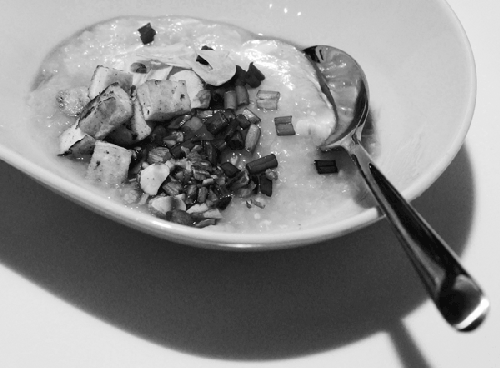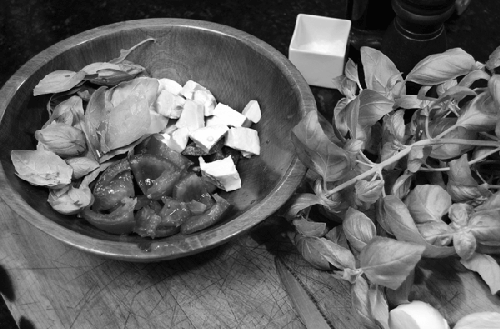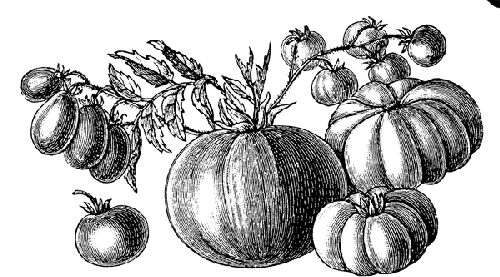1. Rice, Wheat, Grains ≅ Congee, Cream of Wheat, Porridge
A billion
people eat congee daily, but you’re unlikely to find it on many restaurant menus in the
United States, for the same reason that “porridge” and “gruel” don’t appear very often:
it’s a dish meant to stretch the filling power of a few cheap ingredients as much as
possible. (Think Oliver Twist: “Please, sir, I want some more.”) That doesn’t mean it
can’t be delicious and nutritious; it just means that unless your cultural background
includes it, you might not know it. For some, it’s the equivalent of chicken noodle soup:
something nourishing to turn to when sick or looking for comfort.
Since everybody has to eat, every culture has something like congee based on the
staple crop that grows regionally. Different regions of the world support growing
different crops: wheat in the United States, grains such as oats in Europe, and rice in
much of Asia. Wheat becomes cream of wheat, oats become porridge, and rice becomes
congee.
Congee can be “subclassed” into several different versions, depending upon the
culture. The Chinese call it zhou (runny rice porridge with eggs,
fish paste, tofu, and soy sauce); in India, it’s called ganji (rice
“soup” that has flavorings such as coconut milk, curry, ginger, and cumin seeds added to
it). When cooked in sweet milk with cardamom and topped with pistachio or almonds, you
have the dessert version.
If you want a further challenge, try fusion cooking: blending the ingredients and
flavors of two regions together. Why not try porridge with traditional congee toppings, or
congee with porridge toppings? Or, pick two random locations (the tried-and-true
semi-random method: dartboard and map of the world; if you hit water, go for fish), and
create a meal blending the flavors from the different cultures, or using one culture’s
ingredients with another culture’s techniques. Italian and Mexican? Try taco pizza: pizza
with cheese, tomatoes, salsa, beans, and cilantro on top. Vietnamese and Classic American?
How about a Vietnamese hamburger, seasoning the meat with fish sauce, lemongrass, and red
pepper flakes, and adding cucumber and bean sprouts to the bun? Japanese and Classic
European? Go for miso ice cream; it’s salty and sweet, and delicious!
Fusion cooking often results from the mixing of two cultures via immigration. There
are plenty of fusion-like dishes that have come out of cultures situated where two
different regions meet or two different cultures mingle: Mediterranean (North African +
Southern European), Southeast Asian (Asian + European colonialism), and Caribbean (African
+ Western European), for example. Israeli markets carry ingredients from the surrounding
western regions of North Africa (especially Moroccan) and Eastern Europe; their cuisine is
influenced by the traditions of both areas. Modern Vietnamese food was heavily impacted by
French occupation in the 19th century. The United States is perhaps the most diverse
example of fusion cooking; with so many different cultures mingling, you might not even
think of using the term “fusion” to describe our cuisine, but it is. Just think of
African-influenced Southern cooking, the French and African
backgrounds in Cajun food, and the impact of Mexican cuisine on Tex-Mex.
Cook for at least
several hours in a slow cooker, or in a pot set over a very low flame: 4 cups (1kg) water or stock ½ cup (100g) rice, unwashed (so
that the starches remain in the congee) ½ teaspoon (3g) salt
When you’re ready to eat, heat the rice to near boiling to finish cooking. The long,
low-heat cooking will have broken down the starches; boiling the liquid will cause them
to gelatinize and quickly thicken. I have a rice cooker that has a slow-cook mode, so I
switch it from slow-cook mode to rice mode, which is hotter and will take the rice up to
near boiling. If you are doing this in a pot on the stovetop, set the pot over medium
heat, periodically stirring and checking it while working on the rest of these
instructions so that it does not burn on the bottom. While the rice is cooking, prepare a number of toppings. I enjoy: Tofu, cut into small cubes and browned on all
sides Scallions, chopped into small pieces Garlic, sliced into thin discs and toasted on each side
to make “garlic chips” Sriracha sauce Soy sauce Toasted almond slices
You can serve this family-style, with the toppings in small bowls where your guests
can help themselves (or not, in the case of sriracha sauce), or you can portion the
toppings out more formally: a tablespoon or two of tofu, a few teaspoons of scallions, a
sprinkling of garlic chips, and a dash of sriracha and soy sauces. Quantity is not
particularly important, except for the hot and salty sauces. 
Notes This isn’t a fancy or precise dish, and there’s no right or wrong set
of toppings or quantities. (Millions of cooks can’t be getting this wrong.) A
simple rice congee is a great place to try different combinations of
ingredients! To toast the garlic, use a sharp knife to slice a few cloves (or more,
if you’re a garlicphile) into thin discs. Place a frying pan on a burner set to
medium-high heat, but do not add oil. Arrange the garlic wafers in a single, thin
layer. Toast one side until medium brown, about two to three minutes, and then
flip (try using tongs) to toast the second side. Try cracking an egg into the congee at the end of cooking, either in
the pot (and then mix it in), or in the individual bowls (you might need to pop
the congee into the microwave for a minute if it isn’t hot enough to fully cook
the egg). Adding an egg will alter the texture and give the dish a much richer
taste. Try substituting other salty ingredients for the soy sauce and hot
ingredients for the sriracha sauce, using the flavor-by-culture table presented
earlier.
|
One of the keys to a successful blend of two culinary traditions is to choose recipes
for which the ingredients are readily available. Indian cuisine has translated extremely
well to the United States, in large part because the ingredients commonly used either are
already present here (onions, lentils, peppers) or ship and store well (cumin, paprika,
curry powders). Much Egyptian food, on the other hand, relies on goat meat, which is
extremely uncommon in the American grocery store. One great way to find inspiration is to
visit local ethnic markets and stores. They tend to be small storefronts with “weird”
smells from the different produce and spices, and are typically located in obscure
neighborhoods, so ask around to discover where they’re hidden.

Tomato, basil, and mozzarella are a classic Italian combination, and a
good example of “what grows together goes together.” This recipe is all about the
freshness of the ingredients, so you’ll need to wait until the height of summer for
the ingredients to be in season.
Toss in a bowl and serve: 1 cup (180g) sliced tomatoes, about 2 medium
ones 1 cup (15g) fresh basil leaves, from about 3 or 4
stems ½ cup (100g) mozzarella 1 tablespoon (15g) olive oil Salt and pepper to taste
Notes The ratio of basil to cheese to tomato is really up to you. Hold back
some of each ingredient, take a look at the resulting salad, and toss in more of
whatever you think will make it better. The only thing to be careful with is the
salt; once there’s too much in there, it’s hard to fix. How to slice the tomatoes
and cheese is also up to you. Try thick slices of tomato and cheese, alternating
in layers on the plate and served with a fork and knife. Or, slice the tomato and
cheese into bite-sized pieces to be served with just a fork. Try making this twice, once with conventional tomatoes and a second
time with heirloom tomatoes, to see the difference made by the quality of
ingredients. 
|
Xeni Jardin is a coeditor of Boing Boing
Could you tell me a little bit about yourself and
food?
I’ve been fascinated with cooking as long as I’ve been fascinated with creating and
exploring technology, if not longer. To me, the two worlds aren’t mutually exclusive. On
the contrary, they feed each other. Just recently, one of our coeditors on the blog,
Lisa Katayama, was in Nepal, and over the weekend she posted a single sentence: “I could
eat dal bhat every day of my life.” Dal bhat is basically rice and stewed lentils. It’s
what you eat at almost every meal in Nepal. I traveled to the region myself. I was
remembering how good the simple food of that Himalayan country was. So I said, “You know
what? I’m going to make some dal bhat right here in Los Angeles.” I had some split
yellow peas in the cupboard and dug out some different spices. I didn’t know exactly how
to make it so I started Googling. I do this a lot. I’ll spend half an hour poking around
at different recipes. I end up kind of improvising something in the end usually based on
my own cooking experience and different little bits of the recipes I find.
What is it like exploring food both through the Internet and
through traveling and seeing the traditional ways food is prepared in other
countries?
I was in a Mayan village with some people that I work with, a nonprofit. It was
Christmas, and in Guatemala, tamales and Christmas go together. In this particular
village, the women have a particular way that they prepare the Christmas tamales. They
use locally grown white corn. I followed them around and took notes and, with their
permission, filmed the preparation and watched every step. This woman was toasting
sesame seeds over a wood fire, and then grinding them in a stone grinder. Another was
making the spicy sauce. Other women in another part of the room boiled prepared corn
into a mash.
This particular preparation was kind of runny and soft and white, a lot like the
grits that I grew up with in the South. I sat in the middle of this assembly line of
women all wearing their brightly colored woven blouses as they glopped a big dollop of
that soft white corn into big green leaves from the corn plant. Then they added a little
bit of meat and sauce, and then they tied them all up and steamed them.
A few days later we drove back into Guatemala City, where we stayed with a
nonindigenous family. The house was just packed to the gills with tamales that were
purchased from local vendors. When a guy is on the street walking around with a bag of
tamales, the answer is always yes. They have a million different kinds of tamales that
are prepared for Christmas in that country alone. I remember sitting at some Christmas
celebrations there, too. We’re sitting there at the table and there’s sheets of all
these different kinds of tamales. One of the Guatemalan people at the table said, “What
the hell is in this? Cherries?” That’s the kind of sweet and savory Guatemalan tamale
you can get for Christmas.
I can’t get enough of that in the same way that I frequently fall down these
Internet search rabbit holes when I’m just chilling out thinking about what kind of
yummy, healthy food I’m going to prepare for my family and friends. I love exploring
food in traditional cultures as a part of the reporting that I do, and I love exploring
food back here. It’s a fairly important part of my life.